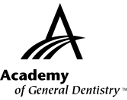|
Exercise No. 352
Subject Code: 610
Prosthodontics/Fixed
The 15 questions for this exercise are based on the article, “Subpontic osseous hyperplasia: a case series and literature review”, on pages 46-52. This exercise was developed by Charles Martello, DDS, FAGD, in association with the General Dentistry Self-Instruction committee.
|
Reading the article and completing the exercise will enable the reader to:
- define subpontic osseous hyperplasia (SOH);
- recognize the significant periodontal and restorative complications of SOH; and
- understand SOH management.
|

